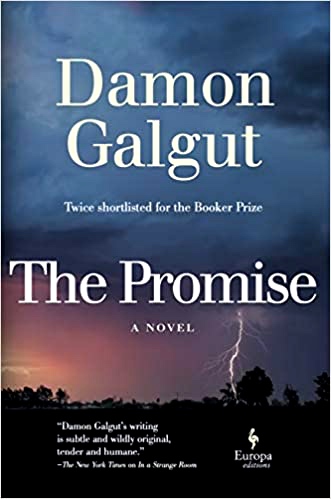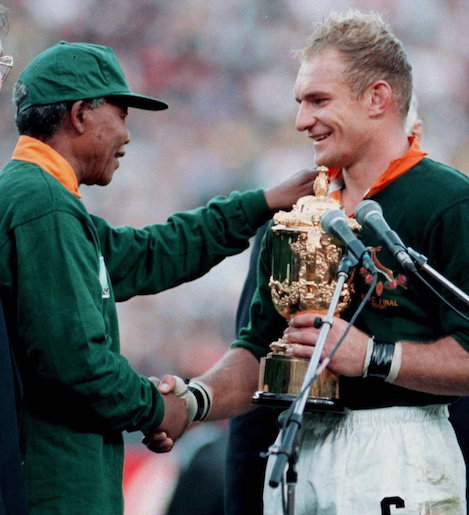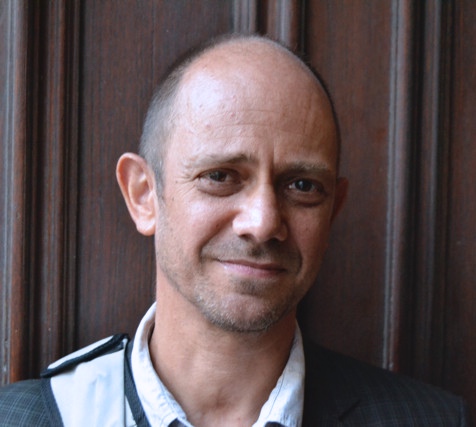Note: This book was WINNER of the Booker Prize for 2021.
“The two detectives have seen it all before. This murder? This one is nothing. You should’ve been with me only last week. Oh boy, things I could tell you. Any reason will do. South Africans kill each other for fun, it sometimes seems, or for small change, or for tiny disagreements….and from each one, concentric rings of pain ripple out in all directions, perhaps forever.”
 Masquerading as a family saga, The Promise is also a depiction of the various crises in the history of South Africa, especially in the past thirty years. The Swart family – Ma, Pa, Astrid, Anton, and Amor – are white descendants of the Dutch and Afrikaner Voortrekkers who settled in rural areas of South Africa in the mid-1800’s as an escape from the British control of the cities of colonial South Africa. Many created large farms in the relatively unpopulated rural areas and ran their farms as their own fiefdoms. The past hundred years have led to significant changes, however. Now, with a growing population and an independence movement leading many of the country’s indigenous inhabitants to demand justice, including the total abolition of apartheid, the tensions and uncertainties across all spectrums of everyday life are palpable. Author Damon Galgut, himself a life-long resident of Pretoria, has lived through these issues, and his family connection to the South African judicial system has made him particularly sensitive to the legal issues in addition to the moral and philosophical ones. By focusing on the lives of a family of five characters from two generations, Galgut presents not just the big, obvious issues of race, and the poverty which comes from lack of opportunity, but also those issues which evolve from within the characters’ personalities, including their often significant personal weaknesses.
Masquerading as a family saga, The Promise is also a depiction of the various crises in the history of South Africa, especially in the past thirty years. The Swart family – Ma, Pa, Astrid, Anton, and Amor – are white descendants of the Dutch and Afrikaner Voortrekkers who settled in rural areas of South Africa in the mid-1800’s as an escape from the British control of the cities of colonial South Africa. Many created large farms in the relatively unpopulated rural areas and ran their farms as their own fiefdoms. The past hundred years have led to significant changes, however. Now, with a growing population and an independence movement leading many of the country’s indigenous inhabitants to demand justice, including the total abolition of apartheid, the tensions and uncertainties across all spectrums of everyday life are palpable. Author Damon Galgut, himself a life-long resident of Pretoria, has lived through these issues, and his family connection to the South African judicial system has made him particularly sensitive to the legal issues in addition to the moral and philosophical ones. By focusing on the lives of a family of five characters from two generations, Galgut presents not just the big, obvious issues of race, and the poverty which comes from lack of opportunity, but also those issues which evolve from within the characters’ personalities, including their often significant personal weaknesses.

The Swart family are descended from the Dutch Afrikaners who participated in the trek from the cities to the rural countryside in the mid-1800s.
Divided into four parts, each of which involves the death of one person connected to the farm, the novel, told by an omniscient and often mysterious narrator, opens with the death of Rachel – “Ma” – the mother of Astrid, the oldest child; Anton, a nineteen-year-old assigned to army service; and Amor, a thirteen-year-old girl who has been away at school and who refuses to believe that her mother is really dead. Her aunt believes that there is “something wrong” with Amor, who was struck by lightning and hospitalized for two months when she was six. As Amor rides home from school, the driver must take into account some trouble in the townships and a State of Emergency “hanging over the land like a dark cloud.” The entire family, seriously dysfunctional on both sides, is at the farm when Amor arrives, each bringing personal concerns with them. Of major concern to the family is the fact that Rachel, Amor’s mother, had been brought up Jewish, but had converted to her husband’s Dutch Reformed church during the marriage, then returned to Judaism as her death approached, and her Jewish burial will not be familiar to the family. Of significant importance also is the fact that it was Salome, the aged servant who “came with the house,” who also took care of Rachel for most of her illness, and Rachel, in gratitude to Salome, has made her husband promise to give Salome the small three-room house in which Salome has lived for the many years she has worked for the family. Amor overheard the promise, one now denied by her father and everyone else who hears of it.

President Nelson Mandela congratulates S. Afr. Capt. Francois Pienaan for the team’s win of the World Cup for rugby in 1995.
Part Two, “Pa,” takes place in 1995, almost ten years later, and much change has taken place. Nelson Mandela is President of the country, and residents are moving to new places and exploring new lives. The Rugby World Cup semifinals are being held in Pretoria, and people of all races are enjoying the excitement. In the Swart family, Astrid has married, though unhappily, and is the mother of two children, living in Johannesburg. Anton who killed a woman and went AWOL from the army years ago, is now unemployed and living with a girlfriend. He and his father have not spoken for ten years, and Anton is not sure whether he can overcome the lasting resentments to go to the farm in Pretoria for his father’s last days. Amor has been living her own life in London, having learned that “if you want to move forward it’s best not to look back.” One new concern to the three siblings is the recent donation their father has made for a conservative, evangelical church to be built on property which has always been “theirs.” No one except Amor has any plans yet to honor their mother’s earlier promise regarding a house for Salome.
Part Three, “Astrid,” shows continued changes, including violence in the cities in the early twenty-first century. Thabo Mbeki is now President for his second term. The three siblings, who have little in common, now have even less contact with each other. Astrid has converted to catholicism and is having an affair, while Anton, working on a book that never ends, is piling up bills and may have to sell some farm land. Amor, now thirty-one and never married, is working as a nurse in an HIV unit in Durban, a conscientious and sensitive person. A murder in the family brings the remaining family back to the farm, and Amor again reminds the family lawyer of the promise made to the now elderly Salome. Unfortunately, “That particular stone never seems to find a resting place, no matter how often it’s turned,” Amor learns. Part IV involves another family death, a land claim against the farm, and a resolution of sorts for the surviving family.
The Promise straddles genres as it focuses on the emotional problems of the Swart siblings’ lives, some of them exacerbated by the behavior of their parents. It also focuses generally on the social and cultural milieu of South Africa from the mid-1980’s to the present, as it moves from a strongly white-dominated government to a more democratic one which recognizes the contributions of all cultures and their importance to peaceful society. The author recognizes that change is happening and that peace is possible, but he does not lecture the reader, preferring to present facts regarding the changes and letting the reader see some of the results, both good and bad. As Amor reviews her own life, she concludes, darkly, “You’re a branch that’s losing its leaves and one day you’ll break off. Then what? Then nothing. Other branches will fill the space. Other stories will write themselves over yours, scratching out every word. Even these.”
ALSO by Galgut: ARCTIC SUMMER
PHOTOS: The photo showing a reenactment of the Voortrekkers to the countryside of S.Africa in the 19th century is from https://za.pinterest.com
President Nelson Mandela is shown congratulating S. Afr. Capt. Francois Pienaan for the team’s win of the World Cup for rugby in 1995, a huge event in the country. https://www.nytimes.com
A S. African hospital in Durban where Amor decides to make her career may be found here: https://bhekisisa.org
The author’s photo appears on http://umuzi.bookslive.co.za


